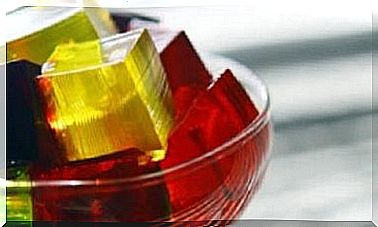World Lupus Day: Butterfly Wing Disease
Through an initiative of the World Lupus Federation , since May 10, 2004, international activities have been carried out for World Lupus Day. This organization has a strong presence and is a benchmark in the matter.
The goal of World Lupus Day is to reach out to governments and financial funding groups to support research on the disease. Let us remember that up to now, the pathology is studied and treated, but it has no cure.
The most common form of presentation is systemic lupus erythematosus, and it is much more common among women than men. It is estimated that 90% of the patients are female. And among them, African-Americans are a majority group.
The causes of lupus are not fully understood, although it is known to be an autoimmune disease. Symptom triggers have been identified, such as sunlight, some infections, and drugs.
The classic sign of a skin rash in the shape of butterfly wings on the face is related to sun exposure. Patients must be very careful with radiation and wear sunscreen almost constantly.
Symptoms of lupus and butterfly wings
World Lupus Day reminds the general population of the characteristic signs and symptoms of this disease. Its early identification does not lead to cure, but it improves chronic management to reduce acute attacks of it.
The sign of the butterfly wings is called, in technical terms, a malar rash. As if it were a dermal irritation, the skin of the nose and cheeks turns red, giving the impression of a drawing of a butterfly.
Although the location is not always that, it was the one that penetrated the most deeply into the collective unconscious about the disease. The truth is that the rash can be present on the limbs and on the trunk, too.
The other prevalent symptom of systemic lupus erythematosus is joint pain. This comes from arthritis that triggers the autoimmune reaction triggered within the body. The evolution of this arthritis is in acute attacks, with periods without pain and others very painful.
Finally, almost 90% of the patients report extreme fatigue. This symptom is difficult to measure objectively, and quality of life questionnaires are used for this. Many factors determine exhaustion, including joint pain and some insomnia associated with lupus.

Other types of lupus
World Lupus Day brings the less common presentations of the disease into consideration. As we have already said, systemic lupus erythematosus is the predominant one, but not the only one. The disease has the ability to mask itself in other ways that make diagnosis difficult.
We can mention these other lupus:
- Neonatal: this happens when the mother has lupus and transmits to her child the antibodies that she has and that attack her own tissues. It can be a serious condition if it progresses to heart problems.
- Dermal: this form focuses its symptoms on the skin. In general, patients do not have arthritis or complications in other organs. It would be a localized variety of lupus, and highly dependent on exposure to solar radiation.
- By reaction: it happens with drugs, and some consider it an adverse effect, rather than a disease in itself.
Treatments for lupus
Lupus can be mild or severe. This will define the therapeutic approach. World Lupus Day aims to promote research in this regard to improve the treatment of patients, however, so far we can only talk about control protocols, not cure.
When lupus is mild, oral anti-inflammatories and creams are indicated for skin eruptions, including the malar reaction in butterfly wings. There are patients who have obtained improvement using hydroxychloroquine, which is the drug for malaria, and some new biologics, such as belimumab.
Severe presentations also need anti-inflammatories, but the attack doses are much higher. Along with corticosteroids, doctors prescribe azathioprine and cyclophosphamide, which are immunoregulatory.
World Lupus Day: the challenge of living with the disease
Lupus is a disease that affects people’s quality of life. Pain, skin reactions and extreme fatigue prevent the proper development of daily activities.
If progress is made in the disease, drugs may be found capable of controlling and even curing the disorder. For now, it is essential that health teams support those affected by providing them with tools to live better.








